Everest Heli Trek with Kala Patthar Summit: The Ultimate 9-Day Himalayan Hybrid Adventure
For those who want both the soul-stirring authenticity of trekking through Sherpa villages and the jaw-dropping aerial perspective of Everest’s mightiest views—without sacrificing a single hot shower—this is your Himalayan holy grail. Over 9 meticulously engineered days, you’ll trek through the Khumbu’s ancient trails to acclimatize properly, spend a night at the legendary Everest View Hotel (3,880m), then let a private AStar B3 helicopter whisk you to altitudes most trekkers only dream of—including a bucket-list landing at Kala Patthar (5,643m) for that unobstructed summit selfie. This isn’t just a trek or a helicopter tour—it’s a scientifically optimized altitude ballet, blending 5 days of immersive cultural trekking with 4 hours of VIP aerial access to Everest Base Camp, the Khumbu Icefall, and Gokyo’s turquoise lakes. Sleep in oxygen-equipped luxury lodges, dine on yak-cheese soufflés, and bypass the Lukla flight lottery with a private helicopter return to Kathmandu—because conquering the roof of the world shouldn’t mean roughing it.
This isn't just another Everest experience—it's a scientifically crafted 9-day elevation masterpiece blending the raw authenticity of trekking with helicopter-enabled VIP access. You'll spend your first 5 days properly earning your mountain stripes—ascending through the Khumbu's ancient trails at a physiologically perfect 300m daily gain, crossing Hillary's iconic suspension bridges, and acclimatizing at the legendary Everest View Hotel (3,880m) where panoramic windows frame Lhotse's terrifying face. Then comes the game-changer: a private AStar B3 helicopter whisks you from luxury lodge to legendary viewpoints in one mind-blowing morning—hovering beside the Khumbu Icefall's deadly crevasses, landing at Kala Patthar's 5,643m summit for that iconic Everest selfie, and tracing the Ngozumpa Glacier to Gokyo's surreal turquoise lakes (4,700-5,000m). The technical magic? Our hybrid altitude profile delivers just 55 minutes exposure above 5,000m (safe but spectacular) while showcasing every Himalayan icon. You'll log 28 miles of authentic trekking (enough to say you've walked in Hillary's footsteps) but skip the overcrowded Base Camp slog—returning to Kathmandu via private helicopter while other trekkers gamble with Lukla's weather. This is next-gen Himalayan travel—where cutting-edge altitude science meets old-world adventure, wrapped in 5-star comfort with oxygen-equipped lodges and Everest View Hotel's famous heated bathrooms.
Everest Heli-Trek Nature Guide: Where Luxury Meets Wild Himalayan Magic
Let's be real - you're not here to stare at spreadsheets of species names. You want to know where you'll actually spot that neon-blue Himalayan monal, which forests smell like heaven after rain, and why your helicopter pilot suddenly banks left for "just one more glacier view." Here's the unfiltered naturalist's intel:
The Lower Khumbu (2,800m-3,500m) - Where the Jungle Still Rules
As you trek from Lukla to Namche, you're walking through what botanists call the "Himalayan Happy Zone" - where oxygen is thick and life goes wild:
- March-May: The mountainside erupts in rhododendron riots so intense, you'll forget you're acclimatizing (pro tip: the crimson ones near Phakding make killer Instagram backdrops)
- Birders' Paradise: That flash of emerald? Probably a Himalayan monal (Nepal's national bird looks like a parrot mated with a disco ball). Listen for the laughing thrushes in mossy oak forests
- Mammal Traffic: Spot Himalayan tahrs - think mountain goats on steroids - grazing cliffs above Namche. Red pandas? They're here too, but sneakier than a Sherpa with your last Snickers
Thame Valley (3,800m) - The Hidden Sanctuary
Most trekkers rush past this side valley. Big mistake:
- The "Other" Rhododendrons: Dwarf R. anthopogon carpets the hills in pink pom-poms (May-June)
- Monastery Wildlife: Tibetan snowcocks strut near Thame Gompa like they own the place (they kinda do)
- Pro Move: Dawn here reveals golden eagles riding thermals up the Nangpa La valley
The Heli Route - Nature on Fast-Forward
When your chopper lifts off, the ecological zones blur like a David Attenborough timelapse:
- 3,800m-4,500m: Last stands of silver birch and Himalayan fir (watch for musk deer shadows)
- 4,700m (Gokyo Lakes): These turquoise pools aren't just pretty - they're aquatic UFOs. The color? Powdered glacier rock so fine it plays light tricks. Look for bar-headed geese - the only birds dumb enough to migrate over Everest
- 5,643m (Kala Patthar): Welcome to the land of extremophiles. Those black dots on snow? Himalayan jumping spiders - the Everest base camp of arachnids
The Luxury Conservation Perk
Your trip does more than most "eco-tours":
- Your park fees fund snow leopard research (yes, they're up here)
- Lodges like Everest View Hotel use solar-heated bathrooms (so you guiltlessly enjoy that 30-min shower)
- Helicopter routes avoid lammergeier nesting zones (those bearded vultures need their beauty sleep)
Everest Heli-Trek Route Breakdown: Where Culture, Adventure & Luxury Collide
This isn't your standard Everest slog - we've engineered a 9-day masterclass in Himalayan efficiency, blending the best of trekking and aviation to deliver maximum wow-factor with minimal discomfort. Here's how we optimize every meter of altitude and every cultural moment:
Kathmandu (1,400m) - The Perfect Launchpad
Your adventure begins in Nepal's buzzing capital, where ancient temples and hipster cafes coexist. Day 2's heritage tour isn't just box-ticking - it's strategic altitude prep while exploring Durbar Square's living history and savoring your last proper cappuccino.
The Trekking Leg (Days 3-6) - Smart Acclimatization Through Sherpa Heartland
From the adrenaline rush of Lukla's cliffside runway (2,840m), you'll descend (yes, down!) to Phakding (2,610m) along the Dudh Koshi River, passing mani walls and suspension bridges strung with prayer flags. The climb to Namche Bazaar (3,440m) isn't just a workout - it's your gateway to Sherpa culture, where cobbled streets hide bakeries serving apple pie beside traditional gompas.
The Everest View Hotel (3,880m) isn't just a luxury stop - it's acclimatization science at its finest. Wake to panoramic windows framing Everest, Lhotse and Ama Dablam while your body adjusts. Then, the hidden gem: Thame Valley (3,800m), a quieter alternative to crowded EBC trails, where yaks graze below 6,000m peaks and the 400-year-old monastery hums with mantras.
The Helicopter Grand Finale (Day 7) - VIP Access to the Roof of the World
While others are grinding toward Base Camp, you'll board your private AStar B3 for the ultimate Himalayan highlight reel:
- Kala Patthar Landing (5,643m): 25 minutes at Everest's most iconic viewpoint (enough for photos, not enough for altitude headaches)
- Everest Base Camp Flyby (5,364m): Spot the yellow tents of climbers from your climate-controlled cabin
- Khumbu Icefall Overview: Appreciate its deadly beauty from the safety of your window seat
- Direct Return to Civilization: Skip Lukla's weather roulette - you'll be back in Kathmandu for a hot shower and celebratory dinner
Everest Heli-Trek Highlights: Where Science Meets Spectacle in the Himalayas
This isn't just a checklist of viewpoints - we've engineered every moment of this 9-day adventure to deliver maximum Himalayan impact with intelligent altitude management. Below are the technical and emotional peaks that make this hybrid trek-heli experience unlike any other Everest journey:
Highlights That Redefine Everest Travel:
- Everest View Hotel Sunrise (3,880m)
Wake up in Nepal's highest luxury property with floor-to-ceiling windows framing Everest's north face - no predawn hike required - Kala Patthar Summit Landing (5,643m)
Spend 25 minutes at Everest's most iconic viewpoint (scientifically timed to avoid altitude issues) with 360° views of Everest, Nuptse and the Khumbu Glacier - Khumbu Icefall Aerial Survey (5,364m)
Witness mountaineering's most dangerous obstacle from your climate-controlled cabin - see crevasses that swallow houses whole - Thame Valley Cultural Detour (3,800m)
Explore this hidden Sherpa gem with its 400-year-old monastery, avoiding the crowded EBC trail while spotting Himalayan tahrs - Namche Bazaar Acclimatization (3,440m)
Two nights at our handpicked luxury lodge with oxygen-enriched rooms and the Khumbu's best espresso bar - Private Helicopter Routing
Custom west-side approaches to avoid crowded flight paths, giving you unobstructed views of Gokyo's six turquoise lakes - Physiologically Perfect Ascent
5-day acclimatization trek with 300m/day elevation gain before any high-altitude exposure - Lukla Airport Bypass
Skip the unreliable twin otter flights with direct private helicopter return to Kathmandu - Everest Base Camp Flyby
Circle above the iconic yellow tents at 5,364m without the 12-day trek commitment - Gokyo Lakes Overview (4,700-5,000m)
Hover above the world's highest freshwater system where glacial flour turns water Caribbean-blue
Everest Heli-Trek Seasonal Guide: When Nature Plays Nice with Your Luxury Adventure
Let's cut through the seasonal hype - your luxury hybrid trek deserves perfect conditions, not a weather gamble. Here's the unfiltered truth about when the Himalayas deliver their best performance for this unique boots-and-rotors experience:
Autumn (October-November) - The Himalayan Gold Standard
Post-monsoon clarity makes these months the sweet spot for hybrid adventures. Daytime temps at Everest View Hotel hover at a comfortable 8-12°C (46-54°F), while nights dip just enough to justify your cashmere layers. The real magic? Visibility stretching to Tibet - your helicopter day delivers crystalline views of Everest's north face and Gokyo's turquoise lakes without atmospheric distortion. Trails are dry, lodges bustling (book 6+ months ahead), and rhododendrons often stage a surprise second bloom in November.
Spring (March-April) - Floral Fireworks with a Caveat
Warmer valley temps (up to 15°C/59°F in Namche) awaken the Khumbu's bioluminescent rhododendron forests - scarlet R. arboreum lining the trail to Thame. But here's the catch: pre-monsoon haze builds by noon. Solution? Schedule your helicopter flight at dawn when the air is clearest. Bonus: Gokyo Lakes display surreal half-frozen/half-liquid states in March as winter loosens its grip.
Winter (December-February) - For Polar Bears with Platinum Cards
Clear skies and empty trails come at a cost: -20°C (-4°F) wind chills at Kala Patthar. Our workaround? Preheated helicopter cabins, down suits, and limiting high-altitude exposure to <20 minutes. The payoff? Everest views so sharp you'll see individual climbers on the summit ridge (yes, really). Thame Valley becomes a snow leopard tracking ground (binoculars essential).
Monsoon (May-September) - Why Even Luxury Has Limits
Don't let discounted rates tempt you. Clouds obscure 80% of views even at 5,000m, turning your helicopter flight into an expensive fog tour. Trails become leech highways, and Lukla flights cancel 60% of the time. The sole silver lining? Emerald valleys so lush they'll make your botanist friend weep.
The Everest Heli-Trek Gourmet Experience: Where Five-Star Meals Meet Mountain Majesty
Let’s be honest—you’re not here to survive on instant noodles and questionable teahouse dal bhat. This is high-altitude dining reimagined, where yak cheese soufflés and Everest-view breakfasts are standard fare. Here’s how we’ve cracked the code on luxury in the Khumbu:
Your Himalayan Home Bases
🏨 Kathmandu (Days 1 & 8): Urban Sanctuaries
- Dwarika’s Hotel or Hyatt Regency
Sleep like royalty in heritage rooms with hand-carved Newari woodwork or modern suites with Everest-facing rooftopsPre-trek oxygen-boosting spa treatments (yes, this actually helps with acclimatization)
⛰️ On the Trail: Where Luxury Defies Altitude
- Everest View Hotel (3,880m)
The world’s highest 5-star property where your bathroom mirror frames Everest’s north face - Altitude-proof amenities: Hypoxic rooms with oxygen concentrators, heated floors, and down duvets thicker than a Yeti’s coat
Namche’s Best Boutique Lodge
- Sherpa-owned luxury suites with electric blankets and rainforest showers that actually get hot
- Private balconies overlooking the Himalayan amphitheater—perfect for sunset whiskey sodas
🍽️ Dining: From Trail to Table
Breakfast Like a Summit Champion
- Everest View Hotel’s signature power breakfast: Organic buckwheat pancakes with local honeycomb, fresh yak yogurt, and Illy espresso
- At Namche: House-smoked salmon bagels with wild Himalayan thyme cream cheese
Lunch on the Move
- Gourmet trail lunches: Deconstructed Sherpa stews in thermal containers, quinoa salads with foraged fiddlehead ferns
- Thame Valley picnic: Charcuterie boards featuring aged yak cheese and sun-dried morels
Dinner Under the Stars
- Everest View’s tasting menu: Truffle-infused dal bhat, seared Himalayan trout with ginger-tamarind glaze
- Namche’s secret specialty: Wood-fired pizza with local chhurpi cheese (washed down with Everest beer)
Heli-Day Extravaganza
- Champagne picnic at Kala Patthar (5,643m):
- Thermos-packed lobster bisque (yes, really)
- Khumbu black tea spiked with cognac for courage
✨ The Vyas Difference
- Hygiene You Can Trust: All meals prepared in EU-standard lodge kitchens
- Altitude Nutrition: Menus designed by Kathmandu’s top sports dietitian (beetroot shots for oxygen boost)
- Heli-Resupply: Fresh seafood and artisanal cheeses flown in weekly (no, we’re not kidding)
- Pro Tip: Request the Everest View’s garlic soup—it’s legendary AMS prevention in a bowl.
Everest Heli-Trek Permits Decoded
Let's be real - you're paying for a luxury Himalayan experience, not a paperwork marathon. Here's the straight talk on permits for your hybrid trek-and-heli adventure, minus the bureaucratic jargon:
The Only 3 Permits That Actually Matter
1. Sagarmatha National Park Permit ($30)
- What it does: Your golden ticket into Everest territory (required even if you're just helicoptering in)
- The Vyas advantage: We obtain this digitally before you arrive - no standing in Kathmandu queues
- Pro tip: The $30 fee directly funds conservation (those trails don't maintain themselves)
2. Khumbu Pasang Lhamu Rural Permit ($20)
- Why needed: Covers your trekking days from Lukla to Everest View Hotel
- Where issued: Our guides handle this in Monjo while you enjoy lunch
- Secret benefit: Includes emergency rescue coverage (hope you won't need it)
3. Helicopter Landing Clearance
- The invisible permit: Your pilot's special aviation authorization for Kala Patthar/Gokyo landings
- Why you care: Only operators with 5+ years experience get these prime landing slots
(Vyas edge: We book these 60 days out (why last-minute deals often disappoint)
Fitness Guide for the Everest Heli-Trek: The Smart Trekker’s Blueprint
Let’s be honest—you’re not signing up for a death march. This 9-day hybrid trek-and-heli adventure is designed for those who want Everest’s highlights without destroying their knees. But "luxury" doesn’t mean "effortless." Here’s exactly what your body needs to handle—and how we’ve engineered the journey to keep it manageable.
The Fitness Sweet Spot: Who Can Handle This Trek?
You don’t need to be an ultramarathoner, but you can’t roll straight off your office chair into the Himalayas. Ideal candidates:
- Regular weekend hikers (5-6 hours on moderate trails)
- Gym-goers who can handle stair climbers for 30+ minutes
- Active travelers comfortable walking 8-10km daily (with breaks)
- Red flags: If walking up 5 flights of stairs leaves you wheezing, train first.
Breaking Down the Challenge
1. Trekking Days (Lukla to Everest View Hotel)
- Daily distance: 8-12km (5-7.5 miles)
- Terrain: Stone steps, suspension bridges, and undulating trails—no technical climbing
Biggest test: The Namche Hill (2-hour climb gaining 600m/1,968ft) - Vyas advantage: Porters carry your main bag (you just need a 20L daypack)
2. Altitude Realities
- Max elevation (trek): 3,880m at Everest View Hotel
- Heli peak: 5,643m at Kala Patthar (but only for 25 minutes)
- Our acclimatization secret: 5 nights sleeping below 4,000m before any high-altitude exposure
3. Helicopter Day (The "Cheat Code")
- Zero walking at altitude: Your chopper does the heavy lifting
- Climate-controlled cabin means no freezing at viewpoints
How to Prepare For This Hybrid Trek
8-12 Weeks Before:
- Cardio: 3x weekly hill walks or stairmaster sessions (aim for 30+ min)
- Strength: Calf raises + step-ups (Namche’s stone steps demand strong legs)
- Practice hikes: Load a 5kg backpack and walk 10km on weekends
1 Month Before:
- Test yourself: Can you walk 12km with 500m elevation gain in one go?
- Break in boots: Blisters are the #1 trip-ruiner
Who Should Think Twice?
❌ Severe knee/hip issues (those stone steps are relentless)
❌ Uncontrolled hypertension (altitude exacerbates this)
❌ Sedentary lifestyles (if "hiking" means walking to your fridge, train first)
Looking for a more relaxed trek? Discover the beauty of the Khumbu region with our Everest Region Short Trek , a perfect choice for those who want to experience stunning views and Sherpa culture at a comfortable, lower altitude.
🧭 Alternative Tours & Packages
- Everest Three Pass Trek
A challenging and scenic high-altitude trek that crosses Renjo La, Cho La, and Kongma La — offering unmatched panoramic views, remote trails, and a deeper Everest region experience.
- Everest View Trek – 5-Star Himalayan Experience
A luxury trekking option that blends Sherpa hospitality and boutique lodges with sweeping views of Everest. Ideal for those seeking comfort while enjoying the mountain landscapes.
- Everest Base Camp Hillary Trek
A timeless journey that retraces the legendary steps of Hillary and Tenzing. Trek through charming Sherpa villages, majestic valleys, and reach the iconic Everest Base Camp with rich cultural immersion along the way.
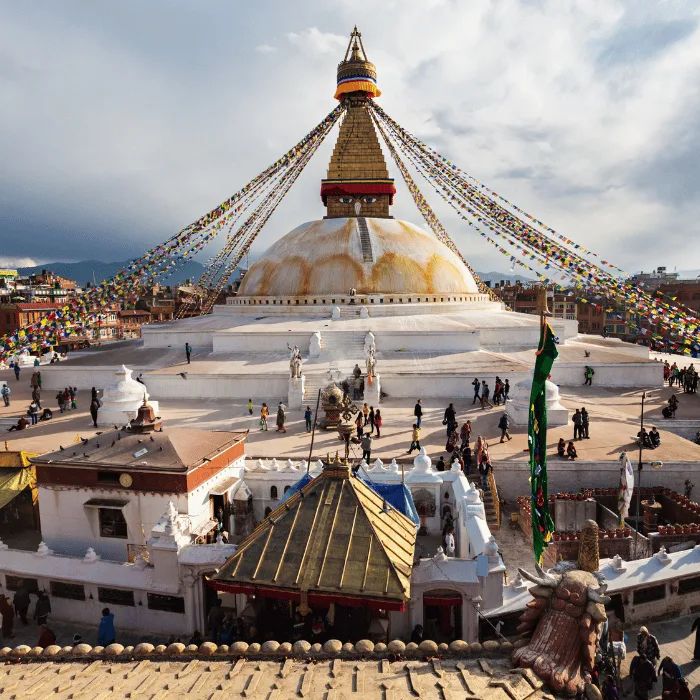
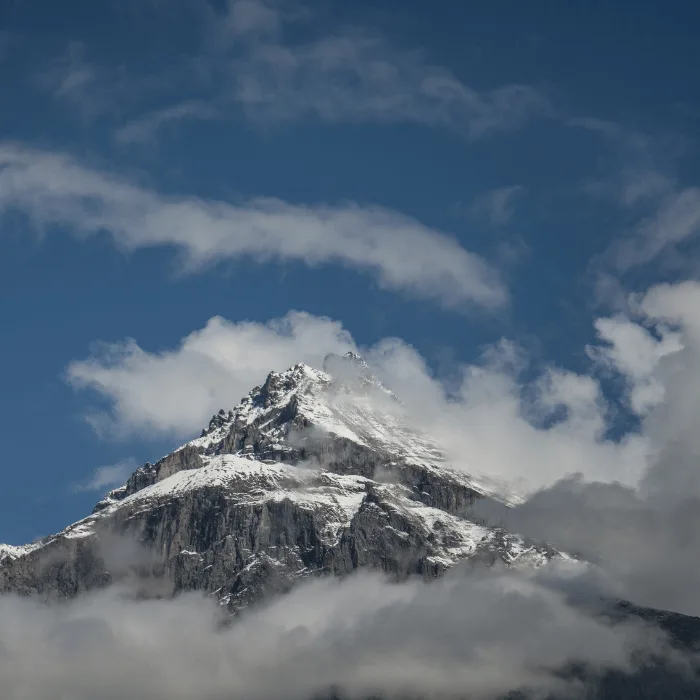
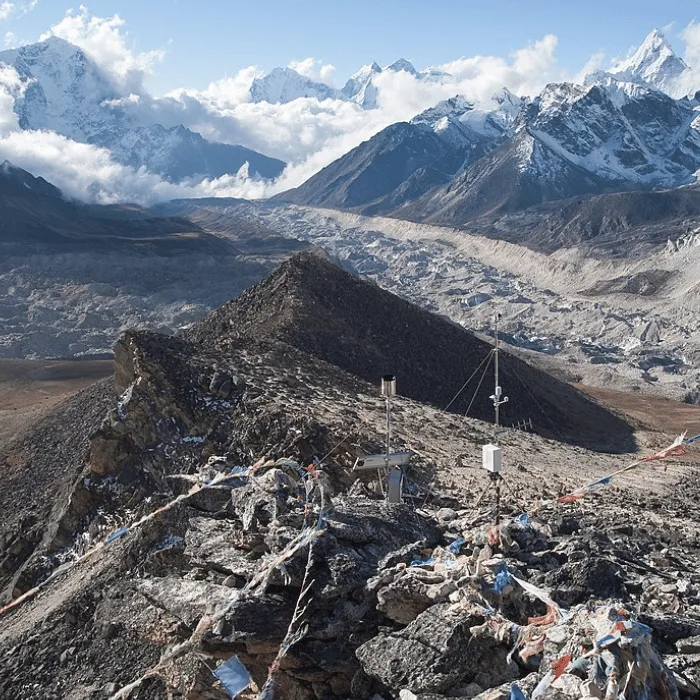

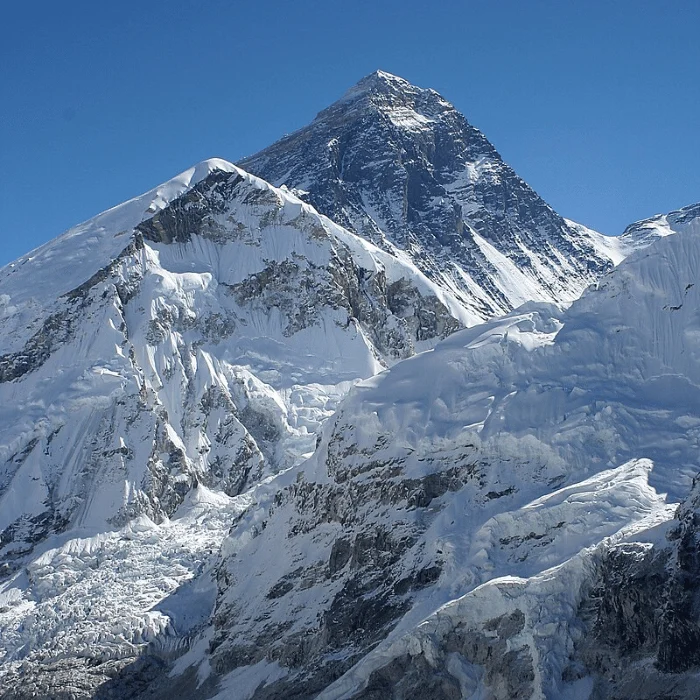


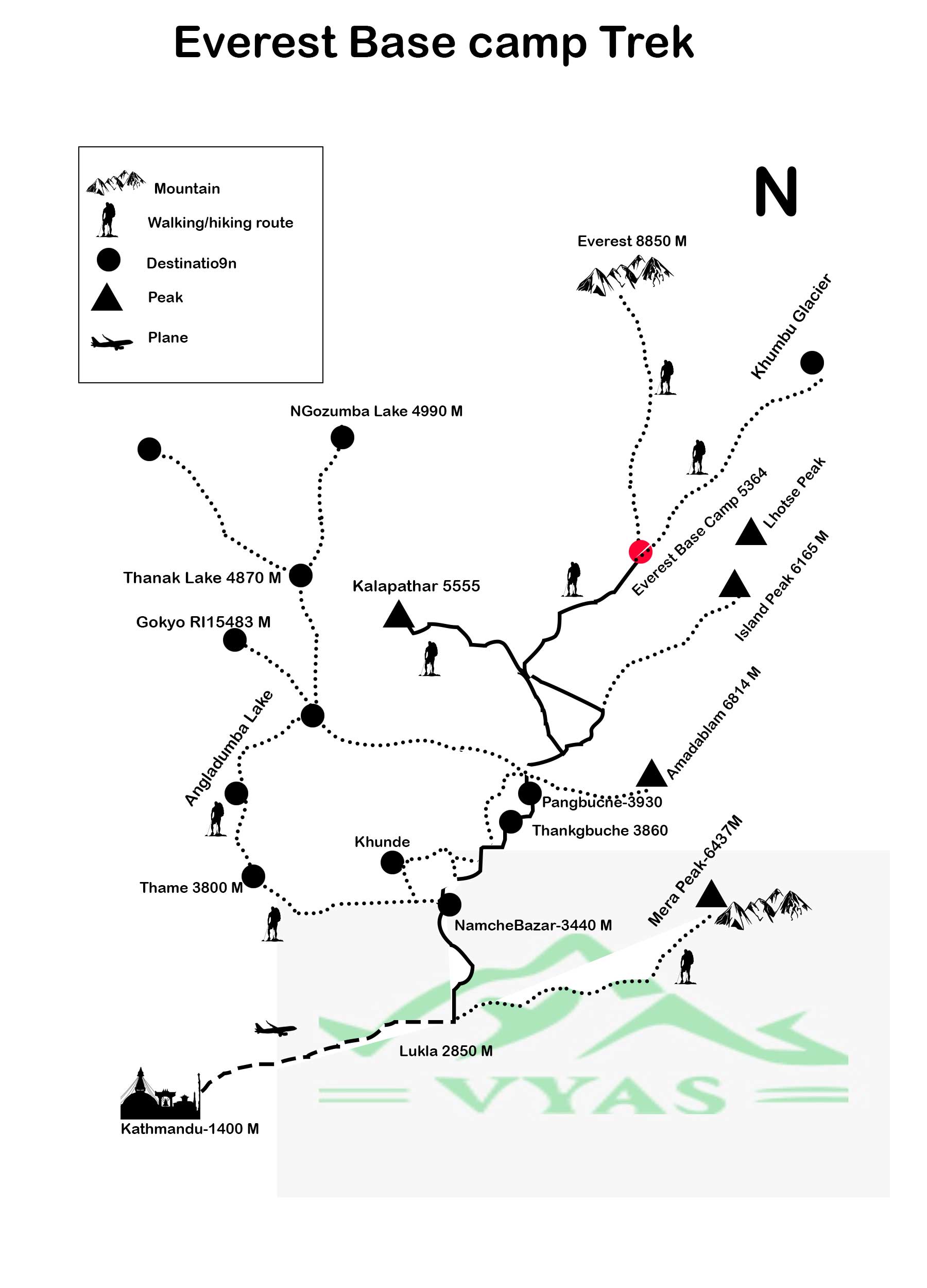






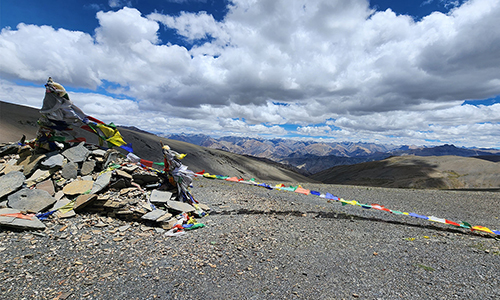

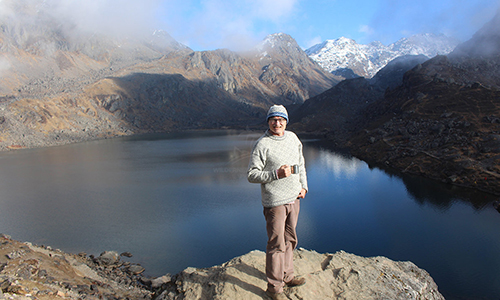


Michael Roberts
2025-06-16 14:39:23
The Everest Heli Trek with Kalapatthar Summit was an unforgettable adventure! Flying high above the Himalayas and then trekking to Kalapatthar to witness the stunning panoramic views was truly breathtaking. Vyas Trek Nepal took care of every detail, making the experience safe, comfortable, and seamless.